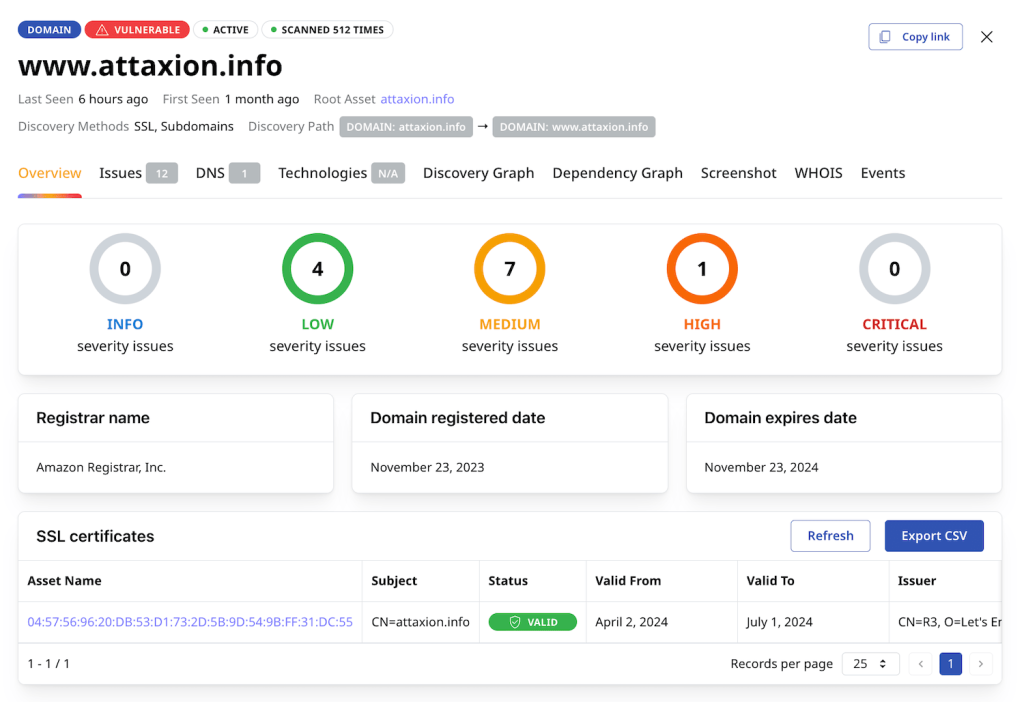Vulnerability scanning is an integral part of attack surface analysis, helping security teams identify security issues, misconfigurations, and weaknesses hopefully before threat actors can exploit them.
Vulnerability scanning can be done in two different ways—active and passive. We’ll talk more about them and their key differences below.
Table of Contents
- What Is Active Vulnerability Scanning?
- What Is Passive Vulnerability Scanning?
- Comparing Active and Passive Vulnerability Scanning
What Is Active Vulnerability Scanning?
Active vulnerability scanning involves sending probes or test traffic to target systems to detect potential weaknesses attackers could exploit. These probes contain data packets usually designed to obtain information about the target.
For example, a security team might perform an active vulnerability scan by configuring a scanner to send probes to all systems connected to the network. The probes would then possibly identify open ports, running services, misconfigurations, default password usage, outdated software, and other potential vulnerabilities.
Active vulnerability scanning necessitates direct interactions with the target network or system and could even mimic what threat actors would do to penetrate it. Because of this, an active vulnerability scan generates more traffic on the network and may disrupt operations.
What Is Passive Vulnerability Scanning?
Passive vulnerability scanning also intends to detect vulnerabilities but does not require sending test traffic. Instead, this vulnerability detection approach involves analyzing existing network traffic or data. Unlike active vulnerability scanning, this process is non-intrusive and generally has a lesser impact as it relies on observing and analyzing the data already flowing through the network.
A passive vulnerability scanner typically collects information about the target system from network traffic and logs. They then compare the data with vulnerability databases to detect the presence of security misconfigurations and issues.
What Is the Difference between Active and Passive Vulnerability Scanners?
Active and passive vulnerability scanners differ in several aspects, including their purpose, methodology, data source, and network impact. Below are some details about their key differences:
- Scope: While both types of vulnerability scanners aim to detect vulnerabilities, they have different scopes. Active vulnerability scans aim to identify vulnerabilities in real time during the scanning process. A passive vulnerability scanner focuses on continuous monitoring of vulnerabilities in the network.
- Methodology: Active vulnerability scans require interactions with the target network through probes, while passive vulnerability scans utilize existing and actual network traffic and data.
- Data source: Active vulnerability scanning collects data from real-time network responses, while passive vulnerability scanning looks into network traffic and logs. Both types of scan are dependent on vulnerability databases to contextualize scan results.
- Network performance effect: Since active vulnerability scanning directly communicates with the network, the process could impact network performance. Passive vulnerability scanning is less intrusive and less likely to disrupt networks.
Both active and passive vulnerability scanning have benefits and drawbacks. Active vulnerability scanning can help detect more zero-day vulnerabilities, but it must be done at a scale and frequency that would not interfere or disrupt network operations.
On the other hand, passive vulnerability scanning is less intrusive and does not affect network performance since it does not involve network interactions.
—
Organizations often rely on solutions combining active and passive vulnerability scanning to manage their growing attack surfaces effectively.
Attaxion external attack surface management platform is an example of such solution. It combines passive and active vulnerability scanning with a broad spectrum of asset discovery techniques to ensure that every external asset in your organization’s attack surface is discovered and thoroughly scanned for vulnerabilities.

Ready to learn more about how Attaxion can help you scan for vulnerabilities in your public-facing assets? Start a 30-day trial now.

